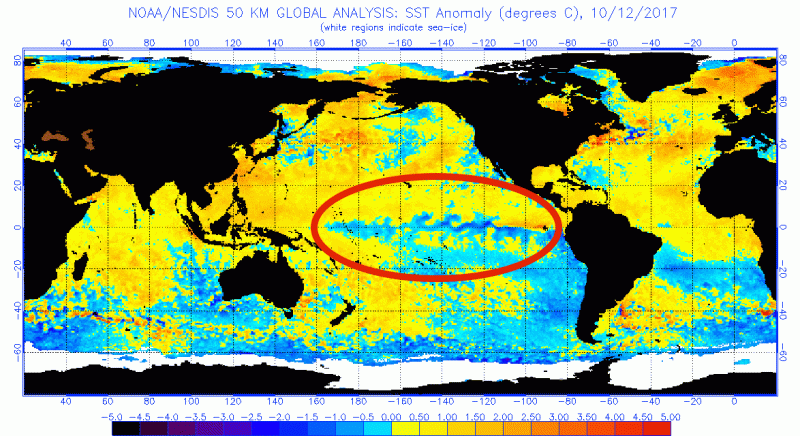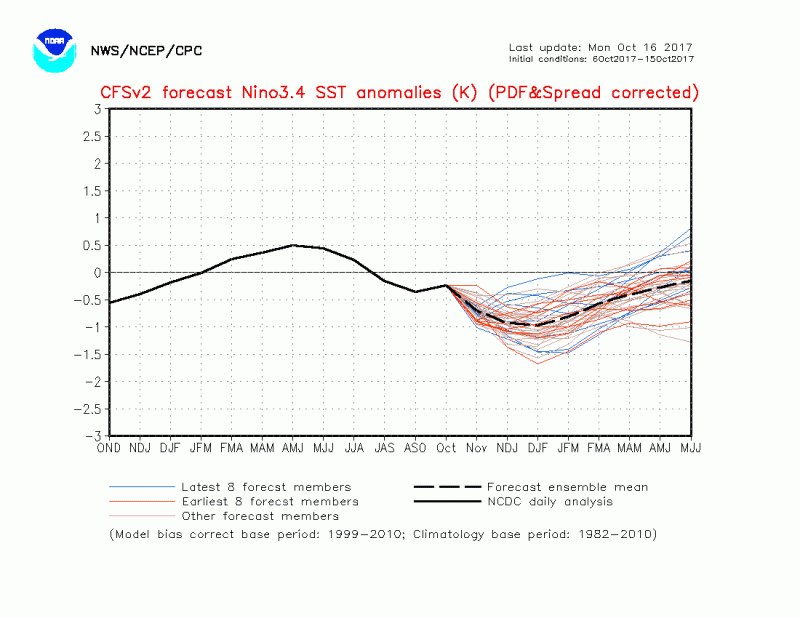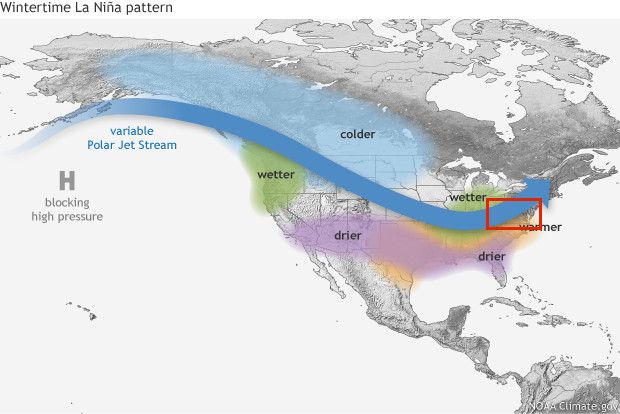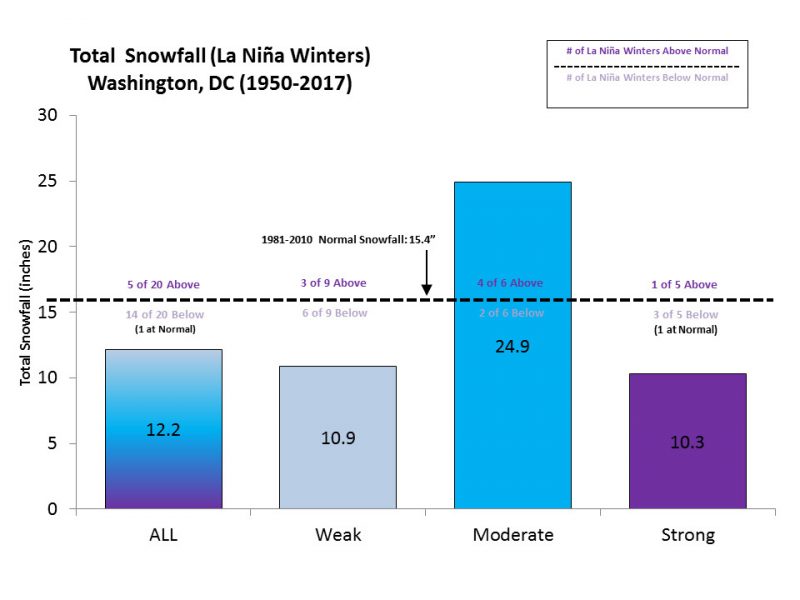We have passed the halfway point of October and everyone is starting wonder what this winter will bring. Many factors go into predicting how cold/warm or how snowy/wet a winter will be, but one of the biggest signs is the El Niño/Southern Oscillation (ENSO).
What is the ENSO/La Niña?
ENSO is a periodic fluctuation in sea surface temperature over the equatorial Pacific Ocean. If the temperatures are warmer than average by 0.5ºC for three straight months it is in the El Niño cycle. If it is cooler than average by 0.5ºC for three straight months it is in the La Niña cycle. Below is what the current cycle looks like.

It can be easily seen that temperatures are cooler than average in the equatorial Pacific Ocean. This means a La Nina is possible. (Via NOAA)
Will this winter be a La Niña winter?
The Climate Prediction Center (CPC) has issued a La Niña watch for the fall and winter 2017-18. This means there is a 55-65% chance of La Niña conditions during this time period. The CPC also predicts that the La Niña will be weak and sea surface temperatures will average between -0.5ºC and -1.0ºC. The forecast from the climate prediction model (CFSv2) agrees with the CPC, but it is also easy to see there is still some wiggle room and disagreement as to how strong/weak the La Niña will be.

CFSv2 model from 10/16/17 shows a spread of possibilities. (Via CPC)
What would a La Niña winter bring?
If a La Niña occurs it usually produces a variable polar jet stream and a pattern similar to the figure below.

Via NOAA
This figure would lead everyone to believe the Maryland area would see a warmer and wetter winter. This might be correct; however, the strength of the La Niña seems to have a big impact as well. The graphs below show that most La Niña winters are less snowy and warmer, BUT a moderate La Niña is great for snow lovers.

Average temperatures during La Nina winters for D.C. (Via NWS DC/Balt)

Total snowfall for D.C. during La Nina winters. (Via NWS DC/Balt)
Conclusions:
It seems very likely that this winter will be a La Niña winter, but also seems likely that it will be a weak La Niña. Weak La Niña winters have had 3 of 9 above average snow seasons and 5 of 9 below average temperatures for the season. Therefore, based solely on the ENSO cycle this winter should be about average, with respect to temperatures, and slightly below average when it comes to snow. However, it isn’t that easy and many factors go into predicting long range winter forecasts besides the ENSO. Therefore, I recommend enjoying the warmer temperatures while they still last and always be prepared for the unpredictable weather Mother Nature brings to Maryland every winter. A more formal winter prediction will come from UMD Weather sometime in the month of November.
Stay with UMD Weather as winter approaches and be sure to follow us on Facebook and Twitter (@UMD_Weather).
Featured image via Pixabay.
